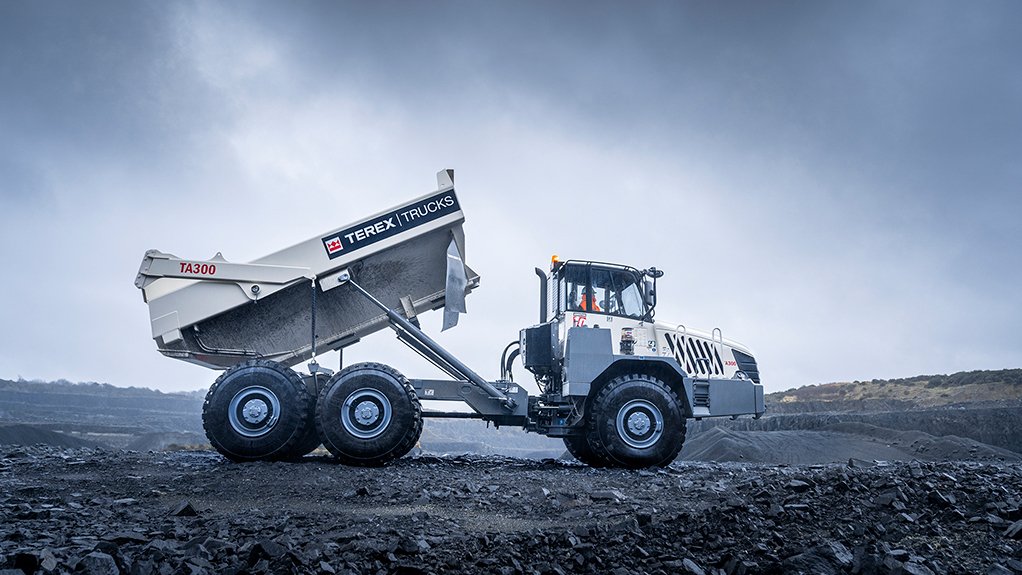Rail travel is considered to be a greener mode of transport and the European region is set to see an increase in tunnelling projects, all of which will require robust and productive machinery.
Scottish manufacturer Terex Trucks details why its articulated haulers are particularly suited for use in challenging tunnelling working environments.
Tunnelling projects usually operate on a very tight schedule, which means the machines working in the tunnel have to run around the clock, seven days a week, as any unscheduled downtime can cause delays and increase costs, so machine reliability and availability are important requirements.
To ensure maximum uptime, Terex Trucks uses a long-life transmission fluid that extends oil change intervals. Its TA300 truck has a maintenance interval of 4 000 hours and its TA400’s transmission has an oil change interval of 6 000 hours. The company has also extended the maintenance life of the actuation hydraulic fluid to 4 000 hours. These changes aim to increase uptime, reduce consumption and disposal of fluids and help minimise the environmental impact of operations. The machines’ magnetic suction filters are designed to further improve machine availability by reducing the risk of contaminants entering the hydraulic system, keeping the hydraulic oil cleaner and prolonging hydraulic component lifecycles.
The TA300 and TA400’s exhaust brake means that operators don’t need to use the brakes when driving down an incline in a tunnel. The machines’ modulating transmission retarder is coupled with an efficient exhaust brake and fully enclosed oil-cooled multidisc brakes, to provide high levels of machine control and operational safety.
To help ensure safe operations, the haulers are equipped with specialised hazard area communications, including indicators for left and right as well as directional lights, often backed up by additional supporting lights. A cabin mounted flashing beacon provides a bright light output even in harsh conditions and the reverse audible alarm and flashing light warn of backwards movement.
The TA300 is powered by a Scania DC9 engine, which develops gross power of 370 hp (276 kW) and a maximum torque of 1 387 lbf ft (1 880 Nm) and the TA400’s Scania DC13 engine develops gross power of 331 kW (444 hp) and a maximum torque of 2 255 Nm (1 663 lbf ft).
Both the TA300 and TA400 have recently been updated with an EU-Stage V emission-compliant engine to help reduce fuel consumption. The fitted three-stage aspirated air filtration provides increased engine protection to lengthen maintenance intervals.
In addition, the trucks are designed for improved operator comfort and upgraded cabs, including a high-performance heating and air-conditioning system. The sealing elements have installed pressurised properties, which helps keep the in-cab temperature stable and minimizes particle ingress.
For ease of maintenance, both models have a fully tilting cab for easy access, and the electronically raised hood allows technicians to reach the engine service points quickly.
EMAIL THIS ARTICLE SAVE THIS ARTICLE
To subscribe email subscriptions@creamermedia.co.za or click here
To advertise email advertising@creamermedia.co.za or click here













